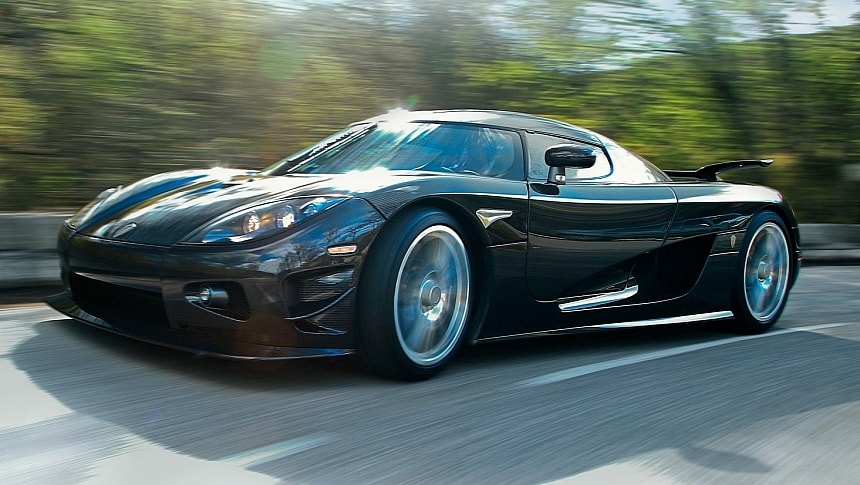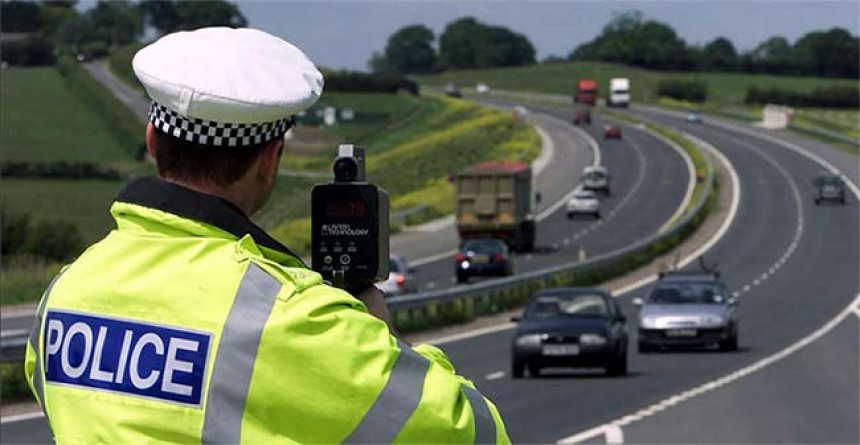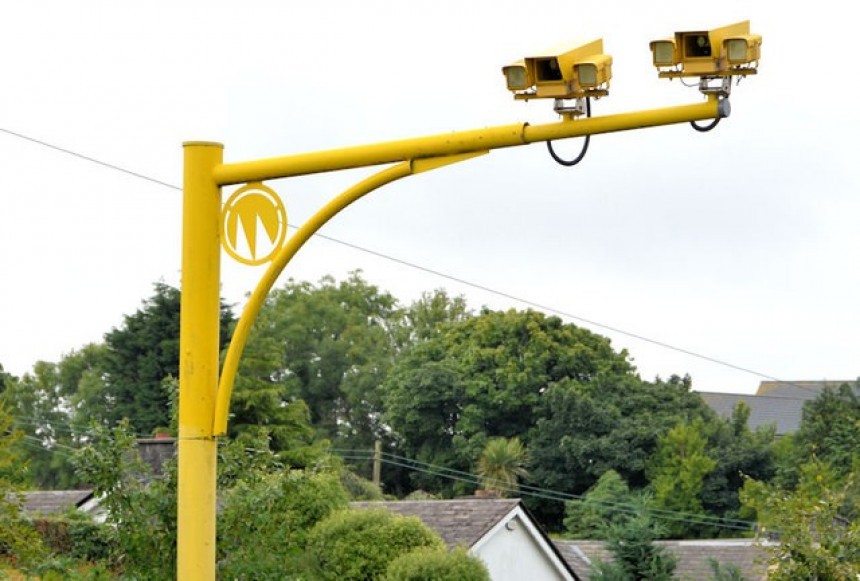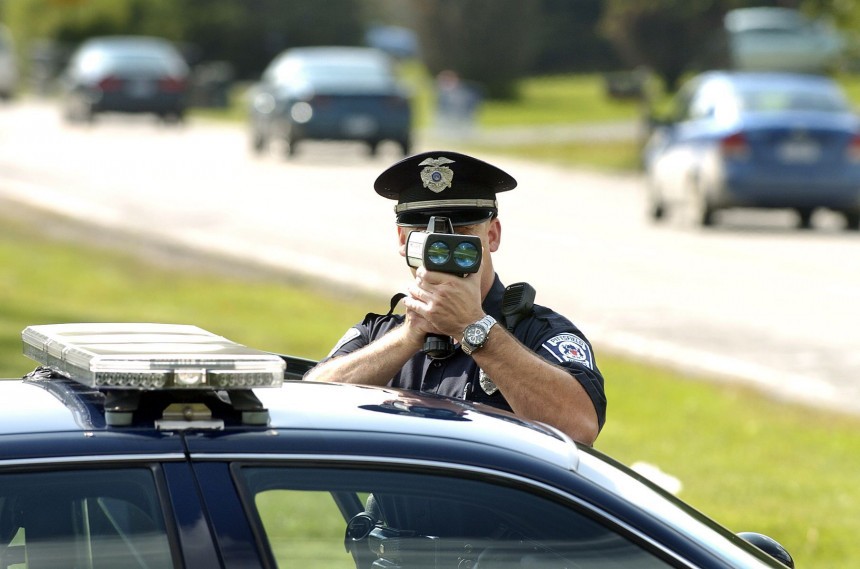Speed cameras have always been a sight dreaded by drivers, and we often tend to fear these things more than we do police officers. Even if they’ve not been around for so long, speed cameras have quickly become one of the favorite pub, media and home topics of discussion, for drivers and non-drivers alike. Are these things useful? Are they accurate in determining speeds? Should they be used? Do they interfere with those privacy rights everyone everywhere is now advocating?
If you came here to learn an answer to one of those questions, you came to the wrong place. That’s not what this story is about. Instead, we’re here to give you a better perspective on speed camera technology, starting with the history of these devices and ending with the types of speed cameras currently in use and how they work.
The speed camera (aka the traffic enforcement camera, as police and administrative officers know it) has been around since 1905 when a patent for a so called Time Recording Camera for Trapping Motorists was filed by an unknown entity or individual. The primitive design (by today’s standards) used the same working principle modern-day cameras use, minus the sophistication: knowing how much distance there is between two points on the road, and the time it took a car that isn’t speeding to cover it.
The camera was supposed to take two photos of a car, one as it moved across the start and the other across the end points of the measured section of the road. In doing so, it determined the speed of the car. What exactly triggered the system is a detail that’s been lost to history, as is any bit on information on whether the world’s first speed camera was actually used somewhere.
In the six decades that followed, nobody really worked on developing speed cameras. The only timid attempts at doing something in this field came from a Dutch company called Gatsometer BV and its founder, a not-so-famous racing driver named Maurice Gatsonides.
In a bid to better himself at racing, specifically to improve his driving times, Gatsonides developed a camera to monitor his speed around corners. The rather benign design was to become the first automated road-rule enforcement system. Thanks to it, the company, which is now called Sensys Gatso Group, went on to become one of the world's biggest suppliers of speed camera systems.
The large-scale deployment and use of speed cameras dates back to the 1960s, and since that time they have evolved greatly to keep up with the times. In the 1990, these systems started turning digital.
There are presently several kinds of speed cameras out there, but it terms of type they can be largely divided into three large groups: mobile systems, fixed speed cameras, and average speed cameras. If you judge them by the technology they use, then we have laser, truvelo and SPECS cameras. We’ll discuss them all below.
Mobile cameras are most commonly found on police vehicles or in officers’ hands. They are the ones some people in certain parts of the world like to call radars, they come in a variety of shapes and sizes, and can be installed in vehicles, hand-held, tripod-mounted, and even concealed.
These systems are equipped with built-in detection equipment that allows the carrier to accurately record the speed of incoming motorists. It does this regardless of whether the place the camera is installed is stationary or not, and can be used to read speeds regardless of the carrier moving with or against the flow of traffic.
This type of camera uses laser technology to work. Simply put, it shoots a light beam toward an incoming vehicle at such speeds that it only needs between 0.3 and 0.7 seconds to acquire and register a target at a range of 800 meters (2,624 feet).
Once the target is acquired, something called the Doppler effect takes hold. What that means is that the radar sends out the beam at specific frequencies and at an angle across the road. When it hits a car, the beam is reflected and it changes frequency. The degree to which the frequency increases or decreases depends on the speed at which the passing vehicle moves.
Another thing mobile speed cameras have going for them is the fact that they can detect the direction in which the monitored vehicle is traveling. This also happens thanks to frequency: if it increases, the vehicle is incoming, while if it decreases, the vehicle is moving away.
One disadvantage has to do with the fact that the beams are directed at an angle (usually 20 degrees) compared to the road. What that means is the frequency shift will indicate a speed lower than the target vehicle’s actual speed. To compensate for the difference and determine the actual speed, the system includes the slant angle into its calculations.
Fixed speed cameras, which are very common today, most often appear as strange, brightly colored boxes placed on the side of the road, dangling from various walls and poles. In cities, they can be seen lurking at stoplights or hanging on overpasses or bridges that intersect the road.
To determine speed, this type of camera is generally equipped with piezo electronic detectors. That’s a fancy way of saying tiny wires embedded into the road surface, in a two-sets-of-wires-per-camera configuration, each wire placed some distance from the other. When a car passes over the first of the wires, a signal activates the camera. When the car moves over the second wire, another signal is received. The camera calculates how long it takes for the car to pass over the two wires, and determines the vehicle's speed. Should that speed be over the limit, it snaps a photo of the car.
The photo is accompanied by info on the date, time, and location where it was taken. The car’s direction of travel, speed, the speed limit on that portion of the road, and even the lane in which the car was traveling at the time it was captured on film are also provided.
The more modern fixed cameras can tell the difference between lanes and can even single out an offending car from a bulk of vehicles.
The average speed camera is one of the simplest tools for catching motorists in the act of speeding. Also known as an automatic number plate recognition (ANPR) camera, it requires no lasers, beams, GPS, or wires to work, and relies solely on snapping pictures and doing a little bit of math.
This system works just like that initial camera from the start of last century. It requires knowledge about the distance between two points, and the departure time of a vehicle from one of these points. By measuring how long it takes it to travel the distance between the two, the camera can determine the speed of a vehicle.
Officially this type of camera is called Speed Enforcement Camera System (SPECS), but is also known in some countries (like the UK) as Speed Violation Detection Deterrent (SSVD). It works best when placed in sequence down a road.
It's pretty hard to say for sure which of the three systems described above is best or worst. It depends on a variety of factors, including on which end of the camera you find yourself at one point. Generally, all three work as advertised, but if you are to ask us, the SPECS is probably the best.
First of all, it uses (and needs) far less pretentious technologies to work, making it less susceptible to the counter-measures invented over the years by offenders or those planning to offend (you know, radar detectors, jammers, and so on). Then, their findings are less susceptible to controversy and debate: the method used averages the speed of the car over a long distance, not at one fixed point as other systems do. That eliminates drivers' urge to slow down when approaching speed cameras for the simple reason such a maneuver would be useless.
After all, if the distance between point A and point B is X, and the time to get from A to B abiding by the law is Y, then how come you managed to do it in time Z, where Z is way smaller than Y?
The speed camera (aka the traffic enforcement camera, as police and administrative officers know it) has been around since 1905 when a patent for a so called Time Recording Camera for Trapping Motorists was filed by an unknown entity or individual. The primitive design (by today’s standards) used the same working principle modern-day cameras use, minus the sophistication: knowing how much distance there is between two points on the road, and the time it took a car that isn’t speeding to cover it.
The camera was supposed to take two photos of a car, one as it moved across the start and the other across the end points of the measured section of the road. In doing so, it determined the speed of the car. What exactly triggered the system is a detail that’s been lost to history, as is any bit on information on whether the world’s first speed camera was actually used somewhere.
In the six decades that followed, nobody really worked on developing speed cameras. The only timid attempts at doing something in this field came from a Dutch company called Gatsometer BV and its founder, a not-so-famous racing driver named Maurice Gatsonides.
In a bid to better himself at racing, specifically to improve his driving times, Gatsonides developed a camera to monitor his speed around corners. The rather benign design was to become the first automated road-rule enforcement system. Thanks to it, the company, which is now called Sensys Gatso Group, went on to become one of the world's biggest suppliers of speed camera systems.
The large-scale deployment and use of speed cameras dates back to the 1960s, and since that time they have evolved greatly to keep up with the times. In the 1990, these systems started turning digital.
There are presently several kinds of speed cameras out there, but it terms of type they can be largely divided into three large groups: mobile systems, fixed speed cameras, and average speed cameras. If you judge them by the technology they use, then we have laser, truvelo and SPECS cameras. We’ll discuss them all below.
MOBILE CAMERAS
These systems are equipped with built-in detection equipment that allows the carrier to accurately record the speed of incoming motorists. It does this regardless of whether the place the camera is installed is stationary or not, and can be used to read speeds regardless of the carrier moving with or against the flow of traffic.
This type of camera uses laser technology to work. Simply put, it shoots a light beam toward an incoming vehicle at such speeds that it only needs between 0.3 and 0.7 seconds to acquire and register a target at a range of 800 meters (2,624 feet).
Once the target is acquired, something called the Doppler effect takes hold. What that means is that the radar sends out the beam at specific frequencies and at an angle across the road. When it hits a car, the beam is reflected and it changes frequency. The degree to which the frequency increases or decreases depends on the speed at which the passing vehicle moves.
Another thing mobile speed cameras have going for them is the fact that they can detect the direction in which the monitored vehicle is traveling. This also happens thanks to frequency: if it increases, the vehicle is incoming, while if it decreases, the vehicle is moving away.
One disadvantage has to do with the fact that the beams are directed at an angle (usually 20 degrees) compared to the road. What that means is the frequency shift will indicate a speed lower than the target vehicle’s actual speed. To compensate for the difference and determine the actual speed, the system includes the slant angle into its calculations.
FIXED SPEED CAMERAS
To determine speed, this type of camera is generally equipped with piezo electronic detectors. That’s a fancy way of saying tiny wires embedded into the road surface, in a two-sets-of-wires-per-camera configuration, each wire placed some distance from the other. When a car passes over the first of the wires, a signal activates the camera. When the car moves over the second wire, another signal is received. The camera calculates how long it takes for the car to pass over the two wires, and determines the vehicle's speed. Should that speed be over the limit, it snaps a photo of the car.
The photo is accompanied by info on the date, time, and location where it was taken. The car’s direction of travel, speed, the speed limit on that portion of the road, and even the lane in which the car was traveling at the time it was captured on film are also provided.
The more modern fixed cameras can tell the difference between lanes and can even single out an offending car from a bulk of vehicles.
AVERAGE SPEED CAMERAS
This system works just like that initial camera from the start of last century. It requires knowledge about the distance between two points, and the departure time of a vehicle from one of these points. By measuring how long it takes it to travel the distance between the two, the camera can determine the speed of a vehicle.
Officially this type of camera is called Speed Enforcement Camera System (SPECS), but is also known in some countries (like the UK) as Speed Violation Detection Deterrent (SSVD). It works best when placed in sequence down a road.
It's pretty hard to say for sure which of the three systems described above is best or worst. It depends on a variety of factors, including on which end of the camera you find yourself at one point. Generally, all three work as advertised, but if you are to ask us, the SPECS is probably the best.
First of all, it uses (and needs) far less pretentious technologies to work, making it less susceptible to the counter-measures invented over the years by offenders or those planning to offend (you know, radar detectors, jammers, and so on). Then, their findings are less susceptible to controversy and debate: the method used averages the speed of the car over a long distance, not at one fixed point as other systems do. That eliminates drivers' urge to slow down when approaching speed cameras for the simple reason such a maneuver would be useless.
After all, if the distance between point A and point B is X, and the time to get from A to B abiding by the law is Y, then how come you managed to do it in time Z, where Z is way smaller than Y?































































